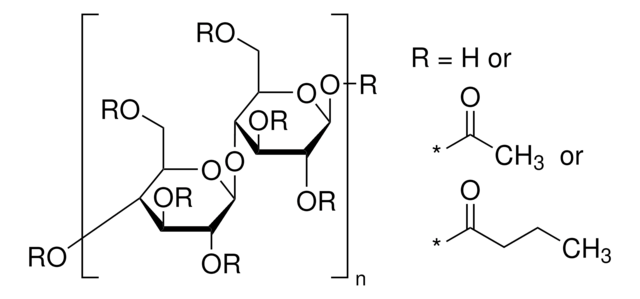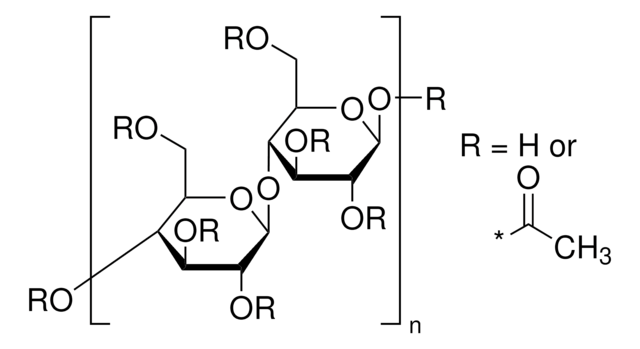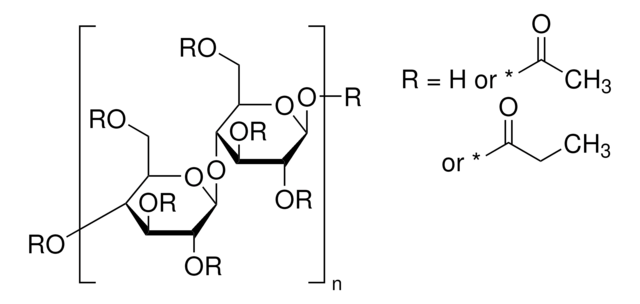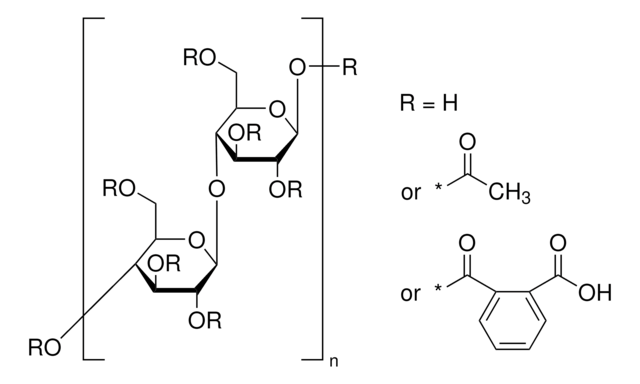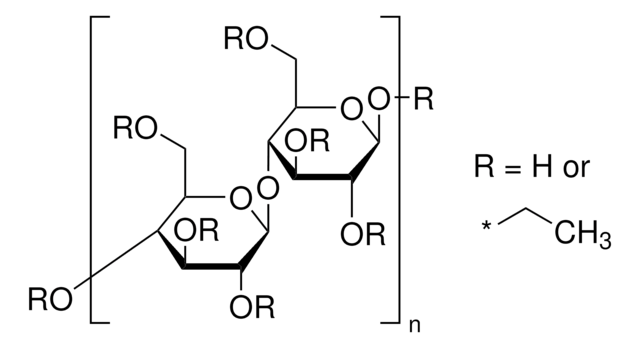Recommended Products
form
powder
Quality Level
mol wt
average Mn ~30,000
extent of labeling
≥49 wt. % Butyryl
1.4-2.4 wt. % Hydroxyl
refractive index
n20/D 1.475 (lit.)
density
1.25 g/mL at 25 °C (lit.)
SMILES string
O5[C@H]([C@@H]([C@H]([C@@H]([C@H]5COC(=O)CCC)OC(=O)CCC)OC(=O)CCC)OC(=O)CCC)O[C@@H]6[C@H](O[C@H]([C@@H]([C@H]6OC(=O)CCC)OC(=O)CCC)OC(=O)CCC)COC(=O)CCC.O3[C@H]([C@@H]([C@H]([C@@H]([C@H]3COC(=O)C)OC(=O)C)OC(=O)C)OC(=O)C)O[C@@H]4[C@H](O[C@H]([C@@H]([C@H]4OC(=
InChI key
WGKMZYZRLDSCLX-OLZTYWLQSA-N
Looking for similar products? Visit Product Comparison Guide
Storage Class Code
11 - Combustible Solids
WGK
nwg
Flash Point(F)
Not applicable
Flash Point(C)
Not applicable
Personal Protective Equipment
Choose from one of the most recent versions:
Already Own This Product?
Find documentation for the products that you have recently purchased in the Document Library.
Customers Also Viewed
Our team of scientists has experience in all areas of research including Life Science, Material Science, Chemical Synthesis, Chromatography, Analytical and many others.
Contact Technical Service